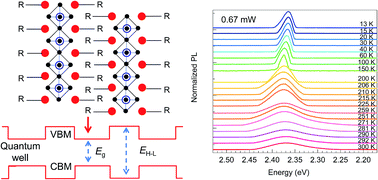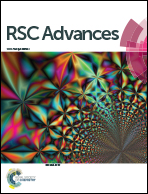Bose–Einstein oscillators and the excitation mechanism of free excitons in 2D layered organic–inorganic perovskites
Abstract
Following intense research on two-dimensional (2D) materials, there has been a resurgence of interest in 2D layered hybrid organic–inorganic perovskites. These 2D perovskites have direct band gaps regardless of their thickness. Excitons are confined to monolayers because of the materials' self-organized quantum-well electronic structure. Gaining insight into the exciton dynamics is central to understanding the light–matter interactions in 2D organic–inorganic perovskites. Herein, we investigate the free-exciton dynamics in 2D layered CH3(CH2)3NH3PbI4 perovskite, demonstrating an anomalous temperature variation of the photoluminescence (PL) energy, which deviates from the conventional Varshni formula and is consistent with the behaviour of Bose–Einstein oscillators. The acoustic phonons induced by the coherent lattice motion of the atoms result in a positive temperature variation. Two-pulse emission modulation measurements reveal the excitation mechanism of the strong two-photon PL in CH3(CH2)3NH3PbI4 perovskite, in which two photons are simultaneously absorbed through a virtual state.

- This article is part of the themed collection: 2D Materials: Explorations Beyond Graphene


 Please wait while we load your content...
Please wait while we load your content...